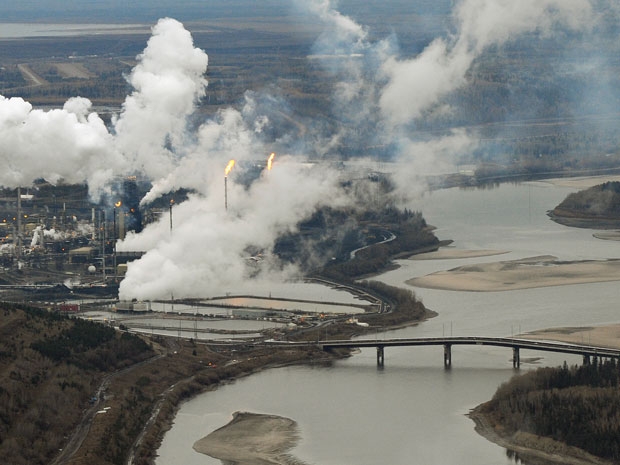
National or provincial guidelines for the protection of aquatic life were exceeded for seven of these metals: cadmium, copper, lead, mercury, nickel, silver and zinc - in melted snow and/or water, says the research, published in the prestigious scientific journal called the Proceedings of the National Academy of Sciences.
The research was led by Erin Kelly and David Schindler, two ecologists at the University of Alberta. Other scientists from Queen's University in Kingston and Alaska also contributed.
In all, researchers found that industry releases 13 elements considered priority pollutants under the U.S. Environmental Protection Agency's Clean Water Act, via air and water, to the Athabasca River and its watershed. The scientists also looked at the 2008 snowpack and found that all these pollutants, except selenium, were greater near oilsands developments than at more remote sites. Bitumen upgraders and local oilsands development were sources of airborne emissions.
The difference in concentration became more pronounced the more the area was disturbed by development. So concentrations of mercury, nickel and thallium in winter and all 13 priority pollutants in summer were greater in tributaries with watersheds more disturbed by development than in less disturbed watersheds, the study says.
At sites downstream of development and within the Athabasca Delta, concentrations of all priority pollutants, except beryllium and selenium, remained greater than upstream of development. Concentrations of some priority pollutants at one location in Lake Athabasca near Fort Chipewyan were also greater than concentrations in the Athabasca River upstream of development.
This is the second part of a larger study being conducted by Schindler and colleagues. The first results were released last December. They showed that a class of chemicals called polycyclic aromatic compounds, some of which are known carcinogens, were being released into the air on airborne particles from plant stacks and dusty mine sites and through run-off from developed sites. Heavy metals are being released in the same way.
The provincial government has disputed that industry is adding significantly to the load of heavy metals. The river naturally contains a lot of heavy metals, and studies show that virtually every metal increases steadily in concentration as you proceed downstream from the foothills through Alberta, the government has said.



Reader Comments
to our Newsletter